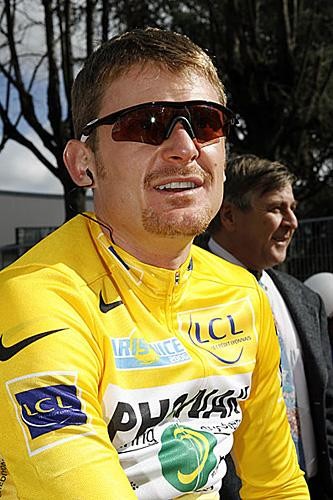L'Equipe reports exogenous testosterone in Landis' A sample
By Hedwig Kröner The aftermath of 2006 Tour de France winner Floyd Landis' positive A probe for...

By Hedwig Kröner
The aftermath of 2006 Tour de France winner Floyd Landis' positive A probe for performance-enhancing hormone testosterone is far from over. Germany's public TV stations ARD and ZDF have since questioned their transmission of cycling races if the sports biggest problem is not solved, and the German cycling federation called for an anti-doping law in Germany on Saturday, one day prior to the ProTour one-day race Vattenfall Cyclassics in Hamburg.
To explain the positive doping test result after stage 17 of the Tour de France, which he won after an impressive solo ride in high mountains, Landis has argued that his relatively high level of testosterone was naturally produced by his own body. The analytical basis for the test being the ratio between testosterone and epitestosterone, normally averaging 1:1, a suspicion of doping is being issued if this ratio is higher than 4:1.
In Landis' case, German media have on Sunday rumoured the result to be 11:1 (all that can be assumed, however, is that Landis must have been over 4:1). "In our medical files appear not only blood levels, but also our testosterone status," said professional cyclists' representative Jens Voigt before the race. "It shouldn't be hard to find out if Landis is telling the truth."
The tests performed on Landis' A sample included an Isotope Ratio Mass Spectrometry (IRMS) procedure, used to determine whether the testosterone is exogenous (contained within, but originating from outside the body) or endogenous (produced by the body itself). In the case of Landis, L'Equipe reported that the analysis found testosterone of artificial origin.
It's understood the French newspaper received this information from a source within Chatenay-Malabry labortory that conducted the test on Landis' sample.
Jose Maria Buxeda, Landis' attorney, contests the detection method via IRMS. "It's not reliable," he told French L'Equipe. "Most laboratories do not use it. In fact, the laboratory of Chatenay-Malabry must be the only one still using it."
The latest race content, interviews, features, reviews and expert buying guides, direct to your inbox!
In the same edition of the paper, however, Christiane Ayotte, director of an anti-doping laboratory in Montreal, Canada, disagrees. "We use the method regularly," she said. "Moreover, more than half of the WADA-accredited labs perform it successfully. I'd even say that an IRMS which gives a synthetic result is very hard to contest. It's not a method that anyone can apply but the LNDD (Laboratoire de Chatenay-Malabry) has totally proven itself in this domain."
It has been pointed out that Landis' thyroid problems, the treatment of his inflamed hip with corticosteroids, as well as drinking alcohol on the night prior to stage 17, could be factors which could have affected his testosterone levels.
"As soon as an athlete is controlled positive for testosterone, the same old stories come up," Ayotte continued. "The increase, even if natural, of the ratio testosterone/epitestosterone cannot, in any case, be explained by taking thyroid hormones or corticosteroids. Alcohol can in fact influence it, but only with women, and only for three or four hours."

